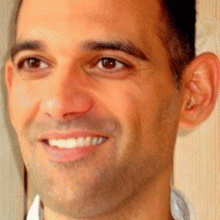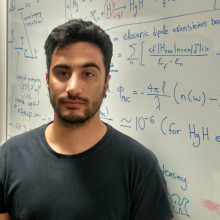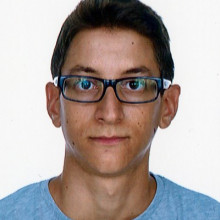High-density, large production rates of highly nuclear-spin-polarized atoms and molecules have important applications, ranging from enhancing
nuclear fusion reactions (helping nuclear fusion reactors be more efficient and more viable), making polarized particle beams for particle collider experiments, to
enhancing nuclear magnetic resonance (NMR) signals, extending this widespread technique to new domains (such as at surfaces) and improving time resolution.
However, conventional methods cannot produce the necessary quantities and densities of polarized atoms and molecules for the above applications. In recent years,
my group has developed two novel methods for the production of spin-polarized atoms and molecules, based on: (1) the UV photodissociation of hydrogen halides,
which produces high-density spin-polarized hydrogen isotopes, and (2) the IR rovibrational excitation of molecules beams, for which the rotational polarization is
transferred to the nuclei by the hyperfine interaction, producing nuclear-spin-polarized molecules. Very recently, we have shown that UV photodissociation can
produce spin-polarized hydrogen at densities 5 orders of magnitude higher (!) than conventional methods. We have also made proposals for using these densities to
verify the expected 50% enhancement of the D-T and D-3He nuclear reactions, for the first time, by performing laser fusion at the National Ignition Facility (USA). An
important goal of this proposal will be performing the necessary preliminary steps towards achieving this important goal. In addition, IR excitation can produce
sufficient production rates of spin-polarized nuclei for nuclear fusion reactors, and for NMR enhancement (5 orders of magnitude higher than conventional methods).
The second goal of this project will be to demonstrate proof-of-principle measurements of nuclear-spin-polarized molecule production in a setup at FORTH, which
can later be scaled up appropriately for applications to nuclear reactors, particle colliders, and NMR measurements. These directions are supported through
collaborations with the Jülich Nuclear Physics Institute (Germany) and Jefferson Labs (USA).
Funding







